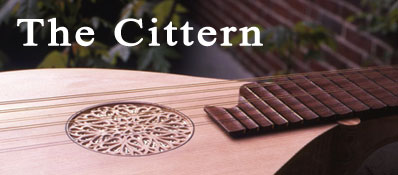Building the Renaissance Cittern
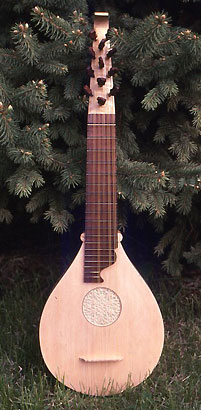
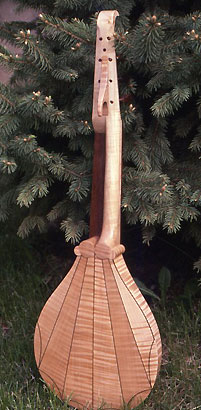
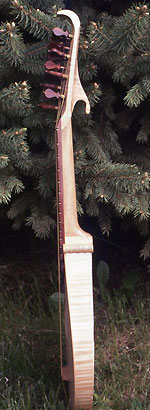
At right is a six-course Renaissance cittern that I built some years ago. I don't have any photos of the actual construction of this instrument, but these will be added as soon as I build another one. The standard Italian tuning, with a 45cm string length, was re-entrant: a c' b g d' e'.
The back of this instrument is scalloped between the dark rosewood fillets, giving it the appearance of a shell. This type of decorative detail is sometimes found on wire-strung instruments from this period.

At left is a four-course cittern that I built with a red varnish. The English cittern in the Renaissance almost always had only four courses. The tuning for an instrument with a 35cm string length was b' g' d" c". Most players today who perform both the solo cittern repertoire and continuo accompaniment prefer a string length of 45cm, and the tuning that Playford uses, b g d' c' (an octave lower). The Italians, not to be outdone, built the cittern with six courses (above).
Citterns work better if you do not use equal temperament. A good choice is 1/6th comma meantone, although some Italian citterns seem to be 1/5th comma.
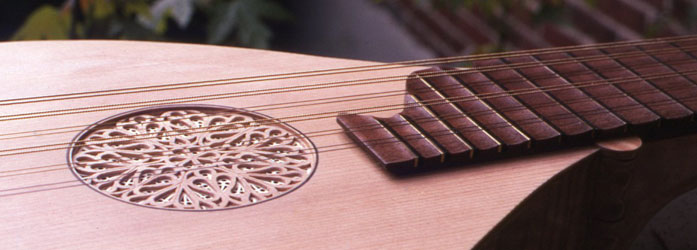 It is important to note that the cittern probably did not have thick, high-standing rounded frets like the modern guitar. I glued a thin blade of brass backed by a block of ebony into the rosewood fingerboard. The entire fingerboard was then sanded flat, so nothing was standing higher than the rosewood. Then I gently scalloped the fingerboard between the brass pieces, to provide a stop for the strings and to prevent buzzing. An example of this type of fret construction on an extant instrument may be seen here: Theatre of Music.com.
It is important to note that the cittern probably did not have thick, high-standing rounded frets like the modern guitar. I glued a thin blade of brass backed by a block of ebony into the rosewood fingerboard. The entire fingerboard was then sanded flat, so nothing was standing higher than the rosewood. Then I gently scalloped the fingerboard between the brass pieces, to provide a stop for the strings and to prevent buzzing. An example of this type of fret construction on an extant instrument may be seen here: Theatre of Music.com.
 The bass strings are each made from two strings of brass twisted together. The treble strings are soft iron. Good reproductions of cittern strings are available from Northern Renaissance Instruments. You can also make your own if you acquire some strings from a harpsichord string maker. Modern steel strings sound a bit strident on a cittern. Authentic strings provide a bright yet warm sound.
The bass strings are each made from two strings of brass twisted together. The treble strings are soft iron. Good reproductions of cittern strings are available from Northern Renaissance Instruments. You can also make your own if you acquire some strings from a harpsichord string maker. Modern steel strings sound a bit strident on a cittern. Authentic strings provide a bright yet warm sound.
On a few of the historical instruments I examined the end of the fretboard is not glued onto, or even touching the soundboard, probably to allow the soundboard freedom to vibrate in this area. On an instrument this small, anything you can do to increase the size of the vibrating plate will help the sound.
|

